Here are a few pictures to show what happens when I make CPHP. Your results may vary, though!
Please note that this tutorial is designed for those already familiar with cold process soap making.
Melt oils and mix up lye solution as you would with CP. You don’t have to worry about controlling the temperatures. Add the lye solution to the oils as soon as you’re confident the lye is completely dissolved. You can stick blend them together right in the crock pot:
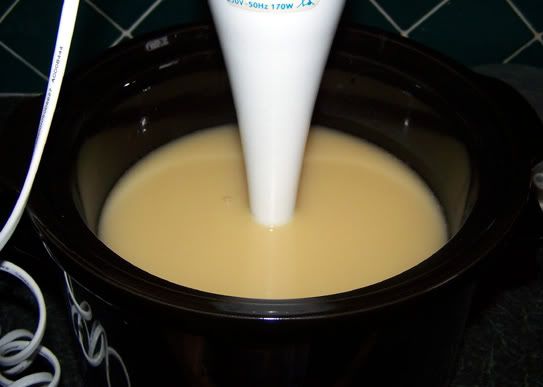
After you’ve reached a nice, thick trace, put the lid on, check the crock pot is set to low, and entertain yourself for about a half an hour. Obsessive folk like me might return to the pot every five to ten minutes for a peek, but there probably won’t be much happening. After about thirty minutes (more or less, depending on your crock pot’s temperature), the edges will begin to gel:
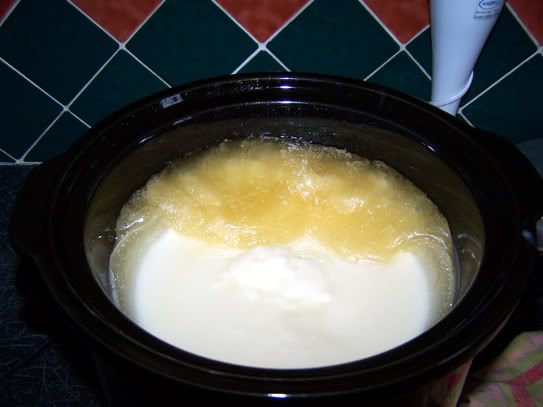
Check back in about ten minutes and the gel will have spread from the edges toward the centre. I usually refer to this as ‘raw soap island surrounded by a gel ocean’. Unfortunately, on the day I decide to take photographs, we have ‘raw soap island being overrun by a gel tsunami’:
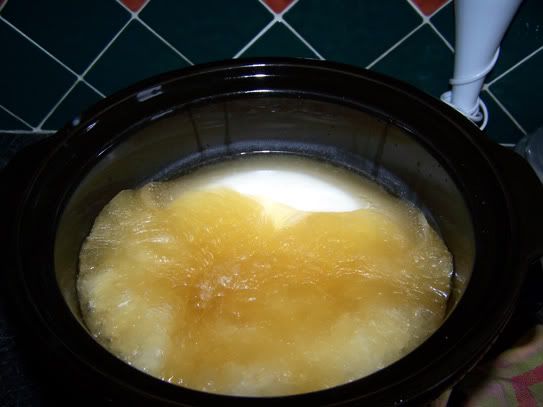
Five minutes later, raw soap island is gone:
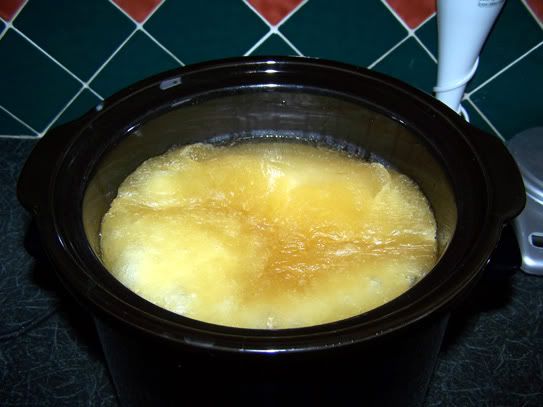
It is at this time I remove the pot from the heat source and give a quick stir just to be sure the gel is complete. If it isn’t, you’ll find a chunk of lighter-coloured raw soap floating in the gel. If you still have raw soap, pop it back in the heat source and cook for another five to ten minutes. This one has completely gelled:
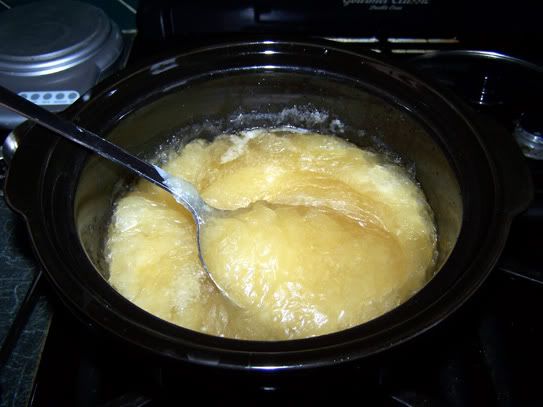
Now you can zap test the soap by taking a little bit out and rubbing it between your fingers to help it cool. It should feel waxy. Once the soap has cooled, lightly tap your tongue with it. If you get a sensation that feels like a 9-V battery, you have active lye in your soap and will need to cook it some more. If not, you can move on to the next step.
When making HP, I add my additives at the end of the cook to avoid having the kitchen smell like the monkey cage at the zoo. Any milks, honey, fruit or veggie purees, etc should go in after the cook. Oils and butters added after the cook will not be saponified, so you get all of their benefits. Today I’m superfatting with a bit of jojoba:
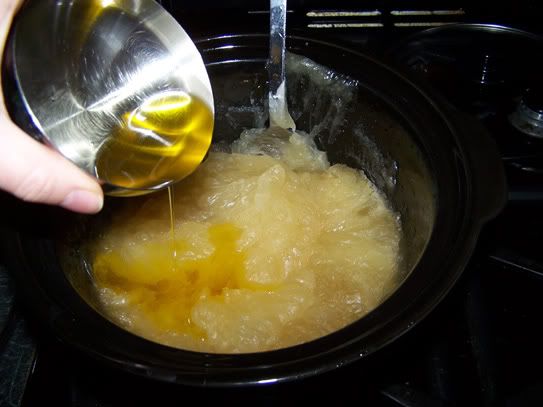
And now a lovely oakmoss fragrance goes in:

While you weren’t looking, I removed a cup or so of soap from the pot and dyed it green. This has been added back to the soap:

And lightly stirred to make an in-the-pot swirl:
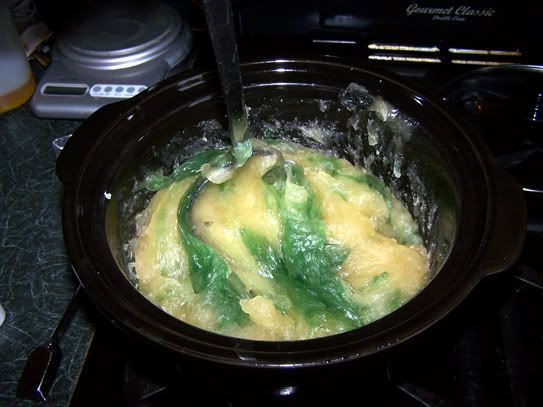
And then spooned into the molds to cool:
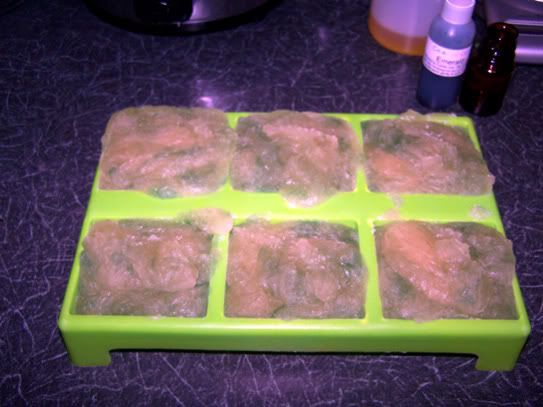
When the soap has cooled, turn it out and you’re done!
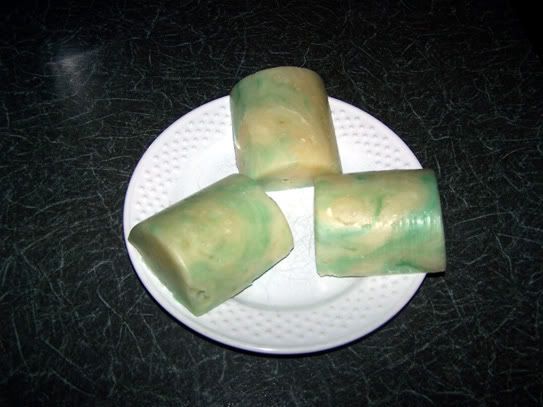
Remember that any HP needs to cure for at least one week, preferably two. It’ll get harder and milder in this time.
Thank you, Elizabeth, for sharing!!

2 comments:
Thanks to Elizabeth for a lovely tutorial and to Joanna for finding Elizabeth! :)
I just love learning new things, even if I never actually make something myself, I love to know how it was done.
great tutorial. thanks elizabeth for sharing. as well, i think joanna should really cover up her DH.
Post a Comment